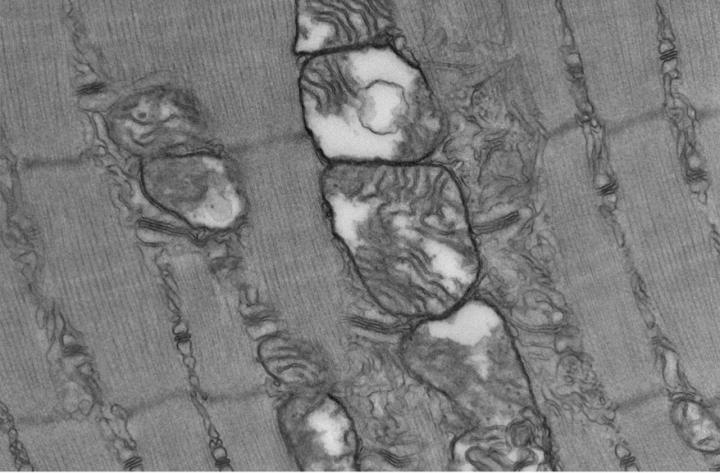New findings may explain why humans experience muscle weakness after sepsis recovery, and suggest the need for novel treatments to improve muscle health

Credit: Owen et al. (CC BY 4.0)
Damage to energy-producing mitochondria may underlie prolonged muscle weakness following a sepsis-like condition in mice, according to a new study published today in eLife.
The findings may explain why humans struggle to regain strength after sepsis recovery, and suggest the need for antioxidant or other alternative treatments to restore muscle health.
Sepsis is the result of an infection that moves into the bloodstream and causes an exaggerated immune response, including harmful inflammation and organ damage. With intensive care and prolonged hospitalisation, some people can survive the condition. But survivors may face chronic weakness and fatigue and find it difficult to return to work and other normal activities.
“Researchers had not previously been able to study the causes of long-term weakness because animal models which capture the long-term effects of sepsis did not exist,” explains lead author Allison Owen, PhD, who conducted the research as a PhD student at the University of Kentucky in Lexington, US, and is now a postdoctoral research fellow at Vanderbilt University Medical Center in Nashville, Tennessee, US.
To address this, Owen and her colleagues developed and studied a mouse model of muscle weakness after sepsis recovery. They confirmed that reduced muscle strength in the mice was not caused by a loss of muscle. They also looked for signs of ongoing inflammation in the muscles that might contribute to weakness and found that this did not appear to be the cause.
Instead, they discovered that energy-producing mitochondria in the animals’ muscle cells were abnormal and showed signs of ongoing oxidative damage. “This suggests that chronic muscle weakness among sepsis survivors is not due to muscle wasting, but rather caused by the loss of muscle quality,” Owen says.
While current treatments for post-sepsis weakness aim to help patients rebuild muscle mass, these results hint at the need for antioxidant therapies or other treatments to restore mitochondrial health in muscles.
“This work may eventually benefit the millions of sepsis survivors who are discharged from the hospital every year and experience prolonged physical weakness and fatigue,” says senior author Hiroshi Saito, PhD, Professor in the Department of Surgery at the University of Kentucky. “It provides evidence that therapeutic strategies aimed at restoring mitochondrial health, in addition to restoring muscle mass, may allow survivors to regain strength and improve their quality of life after sepsis.”
###
Reference
The paper ‘Chronic muscle weakness and mitochondrial dysfunction in the absence of sustained atrophy in a preclinical sepsis model’ can be freely accessed online at https:/
Media contact
Emily Packer, Senior Press Officer
eLife
[email protected]
01223 855373
About eLife
eLife is a non-profit organisation inspired by research funders and led by scientists. Our mission is to help scientists accelerate discovery by operating a platform for research communication that encourages and recognises the most responsible behaviours in science. We publish important research in all areas of the life and biomedical sciences, including Human Biology and Medicine, and Immunology and Inflammation, which is selected and evaluated by working scientists and made freely available online without delay. eLife also invests in innovation through open-source tool development to accelerate research communication and discovery. Our work is guided by the communities we serve. eLife is supported by the Howard Hughes Medical Institute, the Max Planck Society, the Wellcome Trust and the Knut and Alice Wallenberg Foundation. Learn more at https:/
To read the latest Human Biology and Medicine research published in eLife, visit https:/
And for the latest in Immunology and Inflammation, see https:/
Media Contact
Emily Packer
[email protected]
Related Journal Article
http://dx.




